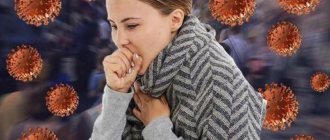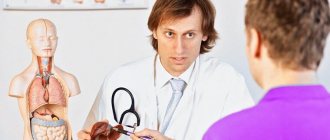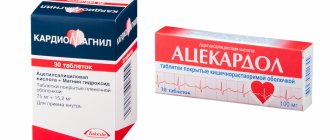During a global pandemic, the usual symptoms of a cold cause great concern, since most of them are typical for COVID-19. But there are some peculiarities in the manifestation of symptoms with such a virus.
Cough
It has a dry character, sometimes with a small amount of phlegm. The cough feels irritating and tickling. From 1 to 3 attacks lasting an hour or more appear per day. If a person coughs like this, this is the first reason to see a doctor.
Temperature
This sign is often one of the first to appear and indicates that the virus can be determined by a blood test. Body temperature rises by 6-9 days from infection, that is, immediately after the incubation period. It is impossible to name specific indicators, since everything is individual. In some patients, the temperature is kept within normal limits all the time. Others complain about 37.2-37.3 degrees. Less often the temperature rises to 38.
If we take the average value, the low-grade fever persists for 1-3 days. Sometimes - up to 5-6 days. If such a situation arises, you must consult your doctor.
To shoot down or not to shoot down? Many doctors do not recommend taking antipyretics if the reading is below 38.5. Other doctors claim that ignoring this body temperature resulted in many patients being hospitalized on days 6-7. There is no universal rule here. If the patient has concomitant chronic diseases or is at risk, it is still worth lowering the temperature. At the same time, you need to drink plenty of fluids, adhere to bed rest and treat the disease according to the doctor’s recommendations.
Loss of smell or taste
One of the most common and well-known symptoms of COVID-19. Scientists believe that anosmia occurs a little differently than typical for ARVI. In the case of Covid, the sense of smell is lost almost suddenly, even when the person does not have nasal congestion.
Anosmia is often accompanied by loss of taste, and subsequently a distortion of taste perception occurs. In most cases, everything is restored within a few weeks, but prolonged impairment of the functionality of the sensory organs is possible.
Runny nose
Nasal congestion usually occurs in the initial stages of the disease. It resembles the course of ARVI, and after a couple of days a person, as a rule, can breathe freely. There is no abundance of mucus observed.
Headache
Moderate intensity is typical for the symptom. Headaches may get worse for two weeks after contracting the virus. Usually the symptom is accompanied by other obvious manifestations, such as loss of smell and taste. Please note that migraines may indicate dehydration.
Indigestion
About 5% of patients experience diarrhea as the first symptom of COVID-19. Moreover, it is relevant for both adults and children. It is important to pay attention to an eating disorder and seek medical help, as the problem can lead to dehydration.
Nausea
Typical for mild COVID-19. Sometimes accompanied by unpleasant sensations in the abdomen and even vomiting. Of course, a symptom cannot be considered the first confirmation of the presence of a coronavirus infection, so you need to look at the totality of signs.
General weakness
People with coronavirus often notice extreme fatigue and aching muscle pain. There is a feeling of “withdrawal” even at normal temperatures. At the moment, it is impossible to call myalgia a specific symptom of COVID-19, but if other signs appear in parallel, you need to be wary.
Features of symptoms and course of COVID-19 in different patients
In November 2021, scientists conducted a study on the course of coronavirus in patients of different genders and ages.
Men and women
Because the virus requires ACE-2 proteins to gain a foothold in the body, those with more of them are especially susceptible to the disease. An increased level of receptors was found in the male reproductive organs, which is why Covid manifests itself more strongly in them.
In general, WHO has not yet provided clear data on the differences in symptoms between men and women. According to the results of research by scientists from the USA, the number of deaths is higher among males and amounts to 69% of all cases. This trend is also observed in the rest of the world.
Studies have shown that lower mortality among women is due to the following factors:
- Genetic - biologist F. Ubeda found that women are valuable for viral infections because they are able to transmit them to the fetus during pregnancy and to the child during childbirth. In this way, the pathogen is transmitted over generations.
- Social - in many countries, the female sex is less active in terms of communication with others. For example, this is typical for Chinese women. Men, on the other hand, are more likely to have contact with others, including physically (they shake hands when meeting). At the same time, women seek medical help more often than men.
There is also an opinion that lifestyle has an impact. There are more men who smoke than women, and smokers are more susceptible to infection.
Children
Initially, scientists argued that children practically do not suffer from a severe course of the disease and tolerate it relatively easily. For example, in December 2021 there were no known cases of pneumonia in a child caused by coronavirus. But children still carry the virus, so it’s worth knowing the symptoms:
- 1-3 years. Slight dry cough, redness in the throat, runny nose, temperature up to 38 degrees, diarrhea. It is especially worth paying attention to the last symptom. Diarrhea in a child is dangerous because it can cause dehydration, so you should definitely see a doctor. For any of the mentioned manifestations.
- 3-7 years. Hoarse voice, slight weakness and aching joints, slight runny nose. It hurts the child to swallow; there is a feeling in the throat that something is tickling.
- 7-13 years old. Myalgia, general malaise, sore and sore throat, dry cough. It is worth considering that in most cases, children of this age tolerate Covid easily, but there are complications. If your child complains of chest pain or difficulty breathing, call a doctor immediately.
- 13-18 years old. Symptoms in a child of this age are almost the same as in adults. However, there are very few cases of severe disease or critical forms.
Remember: even if a child suffers from “corona” easily and without symptoms, with a confirmed infection he must be quarantined.
Symptoms of brain diseases
The most common brain diseases include atherosclerosis, stroke, tumor, vascular aneurysm, and Alzheimer's disease. According to statistics, up to 85% of people are predisposed to developing diseases related to the blood supply to the brain. Such data are a consequence of the unhealthy lifestyle of modern man. The danger of brain diseases lies in their asymptomatic nature. That is, for a long time they do not make themselves felt.
Common symptoms of brain diseases include:
- Frequent headaches that do not go away even after taking medications.
- Memory impairment.
- Constant fatigue.
- Fainting.
- Cramps.
- Fever. Body temperature can reach up to 40 degrees.
- Weight loss to the point of exhaustion.
Specific symptoms of atherosclerosis:
- Noise in ears. It occurs when a cholesterol plaque has blocked 60% of the blood flow in an artery.
- Decreased erection. If a man under 50 years of age has decreased erection, then such a patient's risk of dying from a myocardial infarction is many times higher than that of the same person with normal erectile function.
- Coldness in the extremities. The vessels become stiffer and blood flows through them worse.
Specific symptoms of stroke:
- Numbness of the face and limbs.
- Double vision.
- Difficulty moving.
Every third death in Russia is associated with this pathology.
Stroke happens:
- Ischemic. Associated with blockage of arteries, cessation of blood flow to the brain and necrosis of its tissue. The cause of the appearance is blockage of blood vessels leading to the brain due to atherosclerotic plaque. The second reason is the occurrence of a blood clot in the heart when it is not working properly (for example, during an arrhythmia). As a result, the blood clot “runs” into the brain vessels, causing thrombosis.
- Neurological. Associated with hemorrhage and hematoma formation inside the skull. It occurs due to high blood pressure when, at its peak, a small vessel inside the brain ruptures and a hematoma appears.
There are signs of a stroke that, if recognized in time, can save a life. To make it easier to memorize, they can be combined into the word “IMPACT”:
- Smile. If a person cannot smile and one of the corners of his mouth is drooping.
- Movement. A person cannot move both arms or legs at once.
- Articulation. A person cannot say anything clearly, not even his name.
- Solution. To save a person, you should take him to the hospital and carry out the necessary examinations within 1-2 hours.
Specific symptoms of Alzheimer's disease:
- Avoiding contact with people.
- Lost in space.
- Decreased emotionality and interest in life.
- Hallucinations.
Alzheimer's disease is a form of dementia that occurs in older people. It is most often found in patients who have crossed the threshold of 65 years. At the moment it is incurable.
Specific symptoms of a brain tumor:
- The headache does not go away within two weeks to a month.
- Headache is accompanied by vomiting, hearing loss and coordination.
- Motor perseverations (inability to stop performing an action).
- Inattentiveness and forgetfulness progresses.
Brain tumors are divided into benign, malignant and metastases. In the case of benign, the disease develops gradually, slowly and gently over several years.
Types of brain tumors:
- Intracerebral. The most common and aggressive form is glioblastoma. It is almost impossible to defeat her. The tumor grows through healthy tissue and cannot be localized.
- Extracerebral. They grow on the base or surface of the skull.
- Metastases are secondary brain tumors. The main cancer cells penetrate the bloodstream into the brain and cause the growth of metastases.
Sign up for a consultation
What to do first when symptoms appear
The first and most important thing is self-isolation. If symptoms of Covid are detected, it is necessary to limit contact as much as possible and inform your family doctor about the symptoms. He will order a COVID-19 test to ensure the presence or absence of infection. If Covid is confirmed, the doctor will select treatment tactics, and the carrier will need to remain in quarantine for the prescribed time. Self-isolation ends when you take the test again with a negative result.
Other important recommendations for those exposed to coronavirus:
- try to get plenty of rest so that your body has the strength to fight the disease;
- eat a healthy diet and drink enough fluids;
- follow the correct daily routine;
- Monitor the humidity in the room so that it always remains at the optimal level.
And be sure to follow all doctor's instructions.
Prevention of HIV infection
The first and most important rule is to be regularly tested for HIV, even if you have not had suspicious contacts. It is recommended to be examined once every six months - especially since there are convenient rapid tests for this.
You also need to be careful when choosing partners. You should not take the word of a person who says that he is definitely not sick - it is better to ask for the results of the study and see for yourself that you can trust him. But remember that within six months even contaminated blood may not give positive results.
HIV prevention consists of the following points:
- protected sex with non-regular sexual partners, as well as regular ones, if there is no confidence that the partner is not sick or is faithful;
- exclusion from life of drugs and promiscuity;
- maintaining general hygiene. Avoid sharing razors, toothbrushes, nail clippers, and other items that may come into contact with small wounds.
The main prevention is to be aware of the infection and always remember the danger of infection.
Methods for diagnosing COVID-19 in the laboratory
The disease is diagnosed based on a clinical examination, medical history, and the results of instrumental and laboratory tests.
To date, the following tests are carried out to determine SARS-CoV-2:
- PCR method. Due to its high sensitivity, this test is considered the best for primary screening. As the disease progresses, its effectiveness decreases, so the test is effective only in the initial stages.
- IgG antibody test. Makes it possible to see the presence of an immune reaction to the appearance of a virus in the body. IgG antibodies indicate that a person has already had coronavirus. The sensitivity of the analysis is 96%, that is, a false negative result is possible in 4% of cases. If a person does not have coronavirus, there will be no positive result (100% specificity).
- IgM antibody test. Indicates the presence of infection in the body. IgM antibodies indicate that a person is currently suffering from Covid. The sensitivity and specificity of the test are similar to the previous one.
- Express test. For diagnosis, blood is taken from a finger. The test is considered less effective than previous ones, since the probability of a correct result is 70%.
Today, testing is carried out in all medical laboratories. You can choose a place to get tested based on reviews and recommendations of good doctors. Prices may vary depending on region and internal laboratory policies. The test will be needed to obtain a Fit To Fly certificate, which is required to travel abroad.
Main stages of the disease
The stages of HIV are divided into the following:
- incubation This is the stage at which infection and subsequent multiplication of the virus in the blood occurs. It lasts up to six weeks, sometimes less. Even if infected, at this stage a person will not see obvious signs, and a blood test will not show that there are antibodies in the blood;
- primary. The first signs of infection may already appear here. The second stage lasts for 3 weeks - at this time antibodies appear, the virus is determined in the laboratory;
- subclinical. The first sign of the disease appears - enlarged lymph nodes. The patient feels completely healthy and does not complain about his health;
- the appearance of secondary diseases. The immune system begins to malfunction, causing a variety of diseases to appear: from frequent colds and candidiasis to pneumonia, tuberculosis;
- terminal. The stage involves exhaustion (rather rapid and progressive), as well as the subsequent death of the patient.
The stages do not have one correct time frame - they may differ from person to person. For example, HIV-infected people often feel well for years or do not pay attention to small signs. The disease is detected only at the stage of severe deterioration in health or through random tests.








